Best Medium and Small Trees
Smaller urban lots don’t have enough space for huge shade trees. All you do is create problems on down the road if you plant them. In those cases, and where you need a second or third tree in a yard, these are the best candidates from which you might choose.
Please keep in mind that these lists are more difficult to construct, partly because there are more options and also because there are more situations that call for trees of these sizes (small city lots, patio areas and courtyards, third and fourth trees in a landscape, etc.).
These lists will not include every possible tree for every part of this big state. These will be the best trees (in my opinion) for large parts of Texas. Your favorite independent retail nursery professional will be your best source of specific localized advice.
Medium-sized trees…
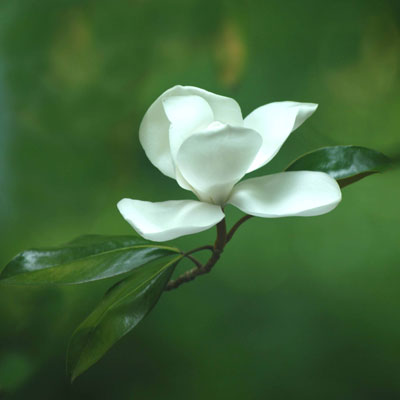
Little Gem southern magnolia: Grows to 30-35 ft. tall and 25 to 30 ft. wide. Leaves and flowers half the size of standard southern magnolia. Evergreen. Blooms in May. Drops prior year’s leaves in May and into June, then sporadically the rest of the year. I wish mine was a few feet farther into the yard so its leaves wouldn’t be falling constantly onto our deck. Where they are suited, these are the best trees in this category with longest life expectancy of any of the trees listed.
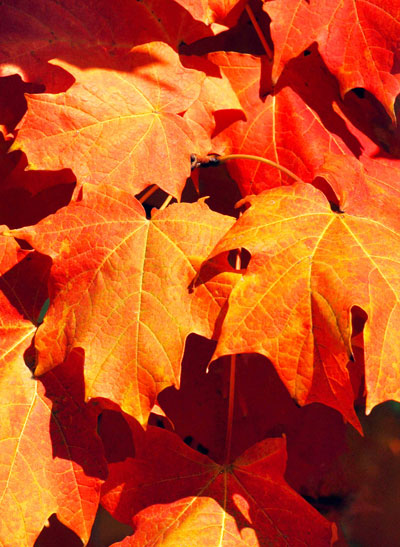
Shantung maple: Grows to 30 ft. tall and 25 ft. wide. Tolerant of heat and alkaline soils. Best adapted to eastern two-thirds of Texas. Outstanding red and orange fall color. A Texas SuperStar(R) selection.
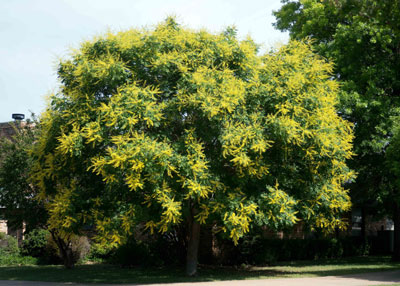
Golden raintree: Grows to 25 to 30 ft. tall and wide. Panicled golden raintree blooms in spring and is winter-hardy in almost all of Texas. Southern golden raintree blooms in summer and produces colorful pink fruit, but unfortunately is only winter-hardy in South Texas.
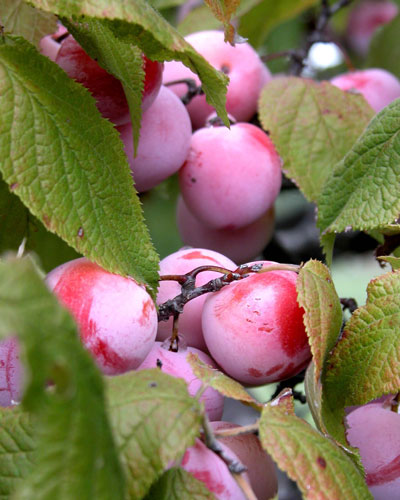
Mexican plum: Grows to 25 ft. tall and wide. Native to eastern half of state. Fragrant white blooms early spring. Fruit ripens in fall. Good for preserves but not for fresh eating. Good for wildlife. Tree has very coarse texture to bark, foliage. Thorns on branches.
Redbud: Grows to 30 ft. tall and wide. Blooms in early spring in shades of pink, burgundy and white. Foliage usually green, but burgundy and variegated types are sold. Sun or shade.
Dogwood: Grows to 25 ft. tall and wide. White, pink or rose blooms in spring. Requires acidic soil, so really best suited only in East Texas and certainly east of I-45. Elsewhere will require extensive and expensive “heroic” soil preparation. Good in partial shade.
East Palatka, Savannah and other large hybrid hollies, especially hybrids of American holly (Ilex opaca): These grow to 25 to 35 ft. tall and 20 to 25 ft. wide. Must have acidic soils or iron deficiency will become severe and limiting. Sun, part sun or even shade. Really only suited to East Texas.
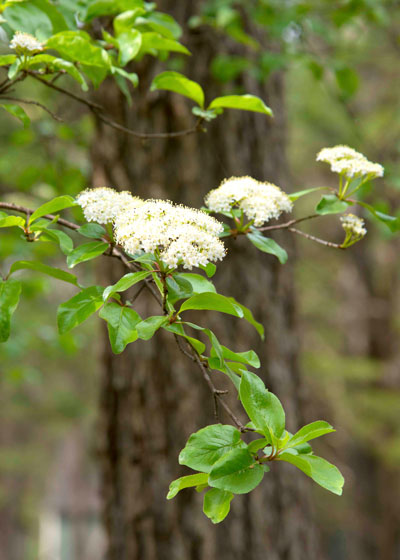
Rusty blackhaw viburnum: Native to eastern half of state. Large shrub sometimes used as tree-form accent to 25 ft. tall and 20 ft. wide. White flowers in spring. Glossy dark green leaves all season with red fall color. Colorful fruit in fall that is a favorite with birds.
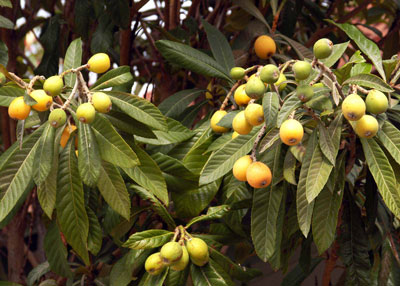
Loquat: Grows to 25 to 30 ft. tall and wide. Large, bold evergreen leaves. Fragrant but unnoticeable flowers in mid-fall followed by edible fruit in spring if winter doesn’t freeze them. Suited mainly to southern half of state due to cold.
Tall selections of crape myrtles: Many types grow to be 25 to 30 ft. tall and wide. You’ll find lists of recommended varieties by size and color on the website of The Crape Myrtle Trails of McKinney.
Japanese maple: Many varieties ranging in size up to 15 to 20 ft. tall and wide. Many have burgundy foliage, some green. To succeed in most of Texas must have shade and moist soils. Best suited to eastern half of the state.
Small trees…
Teddy Bear dwarf southern magnolia: Grows to 15 to 18 ft. tall and 12 to 15 ft. wide with age. Regular size leaves and flowers on ultra-compact form of our standard magnolia.
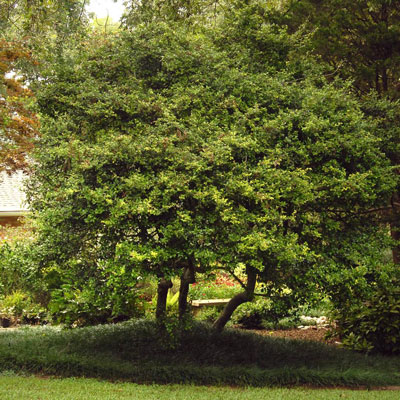
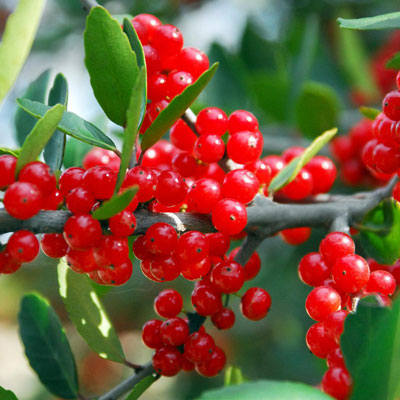
Yaupon holly: Grows to 18 to 20 ft. tall and wide. Fine texture with small leaves. Small red berries on female plants only. Sun or shade. Native shrub to eastern half of state, but easily trained tree-form.
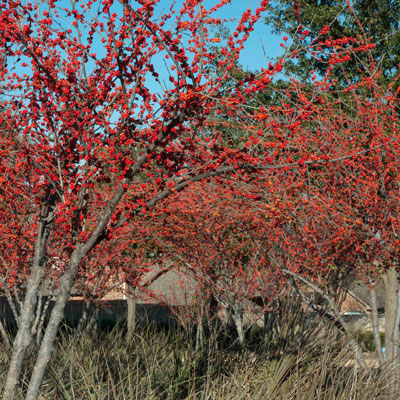
Warren’s Red possumhaw holly: Improved form of plant native to Central Texas north to the Red River. Warren’s Red has larger, redder fruit and is less likely to produce root sprouts. Sun or shade, but best fruiting occurs in sun. Deciduous.
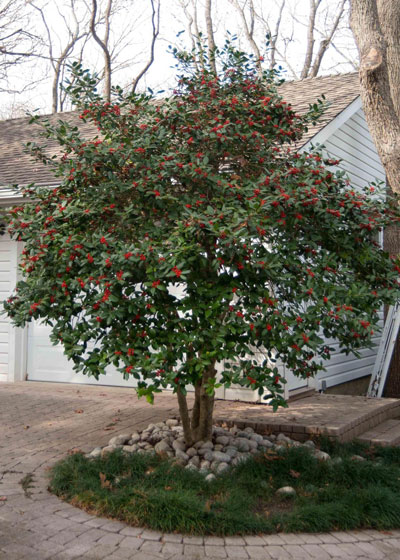
Nellie R. Stevens holly tree-form: Grows to 15 to 20 ft. tall and 12 to 15 ft. wide. Increasingly common as accent tree trained to one or three trunks. Large leaves and very large red berries on every plant. Sun or shade.
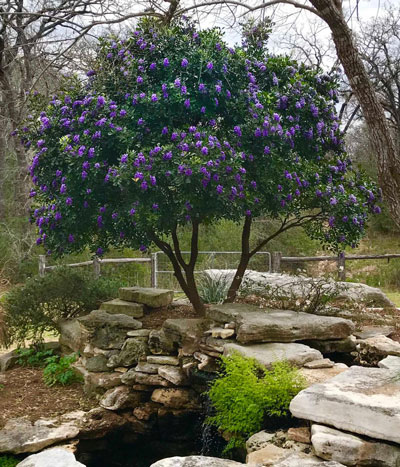
Texas mountain laurel: Grows to 15 to 20 ft. tall and 12 to 15 ft. wide. Native to Texas Hill Country but now used much more extensively. Evergreen, glossy foliage. Highly fragrant lavender flowers in spring. Winter-tender in North Texas and requires excellent drainage.
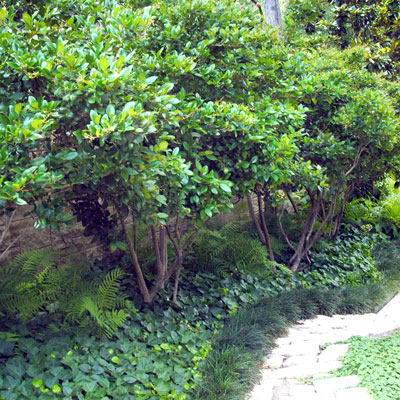
Waxleaf ligustrum: Grows to 10 to 12 ft. tall and 8 to 10 ft. wide. Popular shrub can be trained multi-trunk into small accent tree. Best in sun. Not to be confused with the invasive Japanese privet and even more invasive Amur River privet.
Intermediate crape myrtle varieties: Many selections grow only to 15 to 20 ft. tall and 12 to 15 ft. wide. Can easily be trained into small accent trees. See complete list of recommended varieties at website of The Crape Myrtle Trails of McKinney.
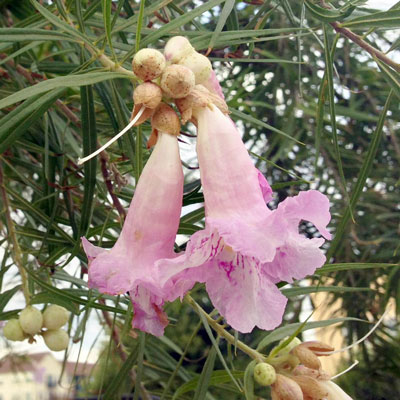
Desert willow: Grows to 15 to 18 ft. tall and wide. Blooms in spring, summer in shades of white, pink and orchid. Plants’ habit can be rather rangy, so best in informal garden designs. Full sun only and best suited to southern two-thirds of Texas due to winter damage.
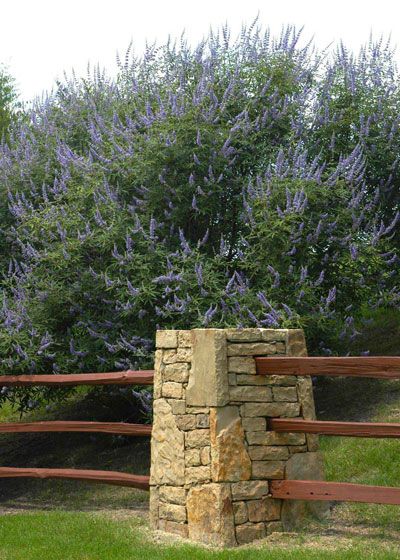
Vitex: Grows to 20 ft. tall and wide. Actually a large shrub, but can be trained into multi-trunked tree with rustic form. Lavender-blue flowers late spring into early summer. Drought- and heat-tolerant. Full sun. Adapted to almost all of Texas. Often seen in older neighborhoods, but now very popular once again. Dwarf forms now available.
There you have my lists. I offer them as my best suggestions in your tree selections for upcoming plantings. I hope you find them useful.
